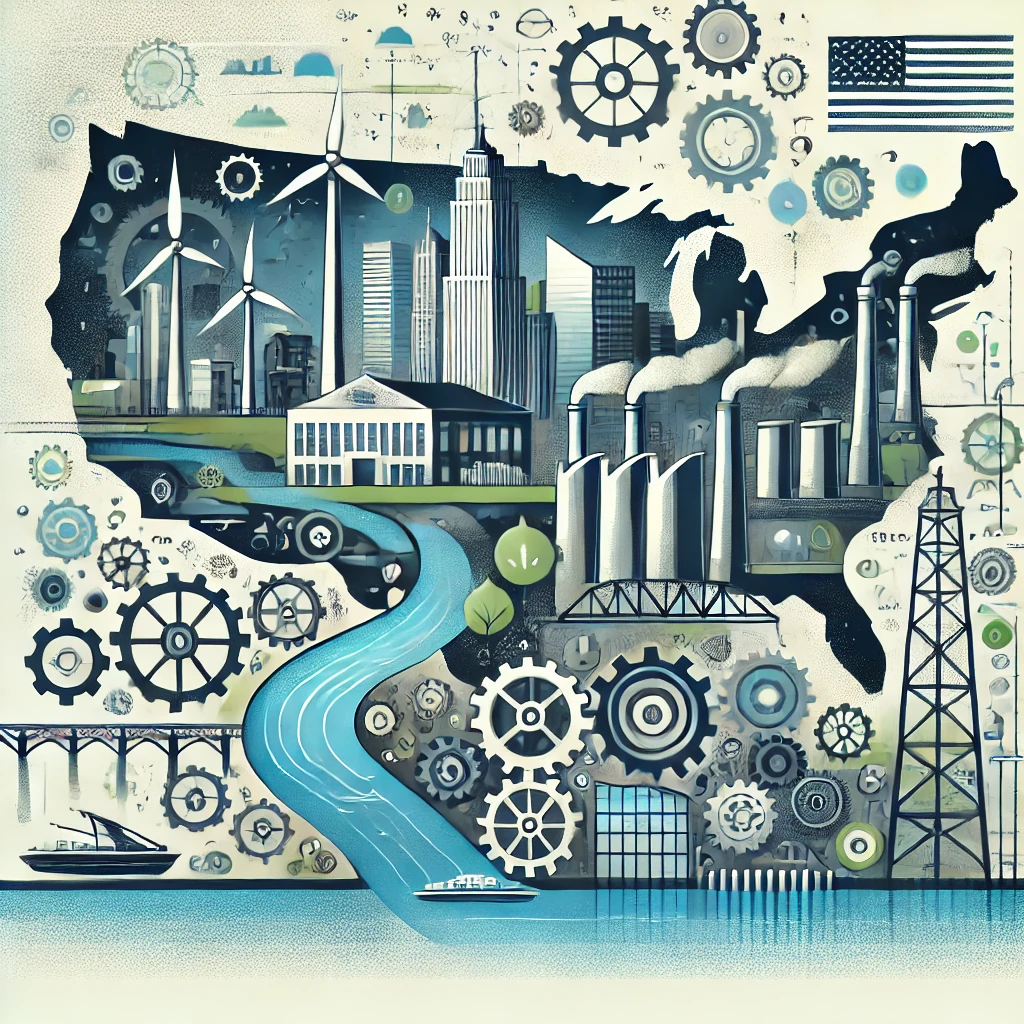At first glance, many advancements, infrastructure projects, and technological innovations in the U.S. appear beneficial and progressive. However, a deeper look often reveals underlying motivations that serve the interests of powerful economic and political entities. These developments, while seemingly benevolent, can be driven by strategic goals and predatory capitalist practices that prioritize the wealthy and influential over ordinary citizens. Here’s how this perspective plays out across various sectors of U.S. society:
1. Infrastructure Projects and Real Estate Development
- Central Arizona Project (CAP): On the surface, the CAP appears as an impressive feat of engineering addressing water scarcity in the Southwest. However, its underlying purpose likely benefits large developers, institutional investors, and federal government interests more than the communities most in need. Urban and suburban growth, enabled by CAP water resources, primarily serves those who profit from real estate and economic expansion.
- Gentrification and Urban Renewal: Urban renewal projects often lead to gentrification, displacing low-income communities to make way for high-end developments. While these projects are presented as neighborhood revitalization, they frequently benefit developers and investors who capitalize on increasing property values.
2. Technological Advancements and Big Tech Influence
- Smart Cities and Surveillance: “Smart cities” seem to enhance urban living through efficiency and technology. However, these initiatives come with increased surveillance, data collection, and control, benefiting tech companies and government agencies that monetize or regulate information flows. Citizens’ data becomes a commodity, turning public-interest projects into corporate opportunities.
- Social Media and Digital Platforms: Platforms like Facebook, Google, and Amazon appear as tools for connectivity, services, and convenience. However, they are also vehicles for surveillance capitalism, extracting data and monetizing user behavior. These companies gain immense power, often at the expense of privacy, personal autonomy, and small competitors.
3. Healthcare and Pharmaceuticals
- Pharmaceutical Advancements: The pharmaceutical industry provides life-saving treatments, but these often come at a high cost. The profit-driven nature of the industry reflects a system designed to benefit pharmaceutical giants and investors, while vulnerable populations struggle to afford care.
- Healthcare System: Despite state-of-the-art medical technology, the U.S. healthcare system remains structurally unequal. Insurance companies, hospitals, and pharmaceutical firms prioritize profits, ensuring that access to healthcare remains a business opportunity rather than a public right.
4. Public-Private Partnerships and Federal Policy
- Government Contracts and Infrastructure Development: Federal projects, often presented as essential for national growth, can disguise how large contractors and developers disproportionately benefit. Public-private partnerships aim to attract private investment for public goods, but they can lead to cronyism, where contracts and profits flow to powerful firms with political connections.
- Military-Industrial Complex: The military and defense sectors are intertwined with private industry, where defense spending, justified on national security grounds, often translates into lucrative contracts for major defense contractors. This system ensures that the military-industrial complex benefits significantly while the public bears the financial burden through taxes.
5. Water Rights and Resource Allocation
- Water Infrastructure: Projects like the CAP, aimed at securing water for growth, often prioritize agricultural conglomerates, developers, and industries rather than communities most at risk, such as small farmers and Native American tribes. Water allocation becomes a tool for economic gain, serving established power structures over the needs of the marginalized.
- Agricultural Policy: Large agribusinesses benefit from subsidies and policies meant to support food supply and rural development. In practice, these policies often entrench the dominance of corporations like Monsanto (now Bayer) while smaller, family-owned farms struggle with higher costs and fewer resources.
6. Housing and Real Estate Markets
- Subprime Mortgage Crisis: The 2008 financial crisis shows how seemingly prosperous financial practices can have deeply exploitative elements. The subprime mortgage market created the illusion of wealth, but led to widespread economic devastation for average homeowners, while large financial institutions were bailed out, highlighting a system that protects the powerful.
- Affordable Housing Initiatives: Programs aimed at creating affordable housing can sometimes be manipulated to benefit developers and investors more than the communities they are intended to serve. Tax incentives and subsidies are often utilized in ways that maximize profit for large firms while affordable housing remains scarce.
7. Energy and Environmental Policies
- Renewable Energy Projects: While critical for climate change mitigation, renewable energy projects often serve corporate and governmental agendas that prioritize profit. Investments in solar and wind energy may not necessarily translate to affordable energy for consumers but rather become lucrative opportunities for energy giants and investors.
- Resource Extraction: The oil and gas industry has maintained strong influence over federal policies, ensuring that policies often favor expansion and deregulation, maximizing profits for energy companies at the expense of environmental protection and public health.
Summary: Benevolent Appearances with Nefarious Underpinnings
Many U.S. advancements and developments are driven by capitalist interests and strategic goals that prioritize profit, influence, and control for powerful entities, whether corporations, investment firms, or the government itself. While these projects are often presented as beneficial or necessary, the underlying reality can be one of exploitation, manipulation, and prioritization of the wealthy and powerful.
This critical perspective emphasizes the need to look beyond the surface of developments, recognizing that what appears beneficial may be strategically engineered to reinforce existing power structures and maximize gains for the “big end of town.”
Discover more from Kango Anywhere
Subscribe to get the latest posts sent to your email.




